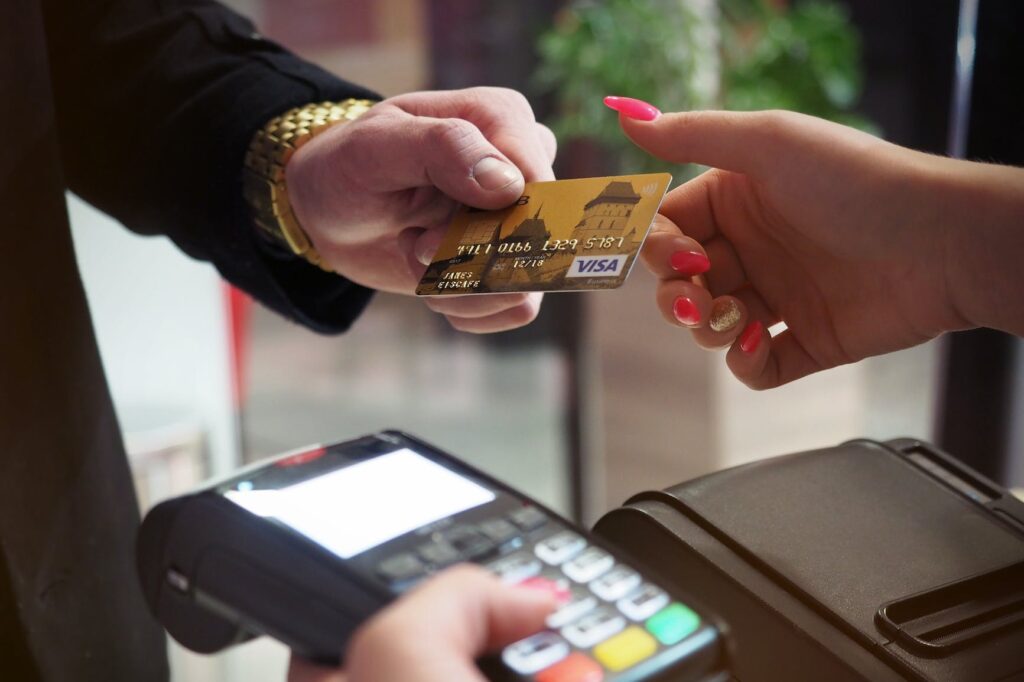Contents
- 1 Understanding OTPs for International Transactions
- 2 Challenges of Using OTPs for International Transactions
- 3 Factors Contributing to the Absence of OTPs for International Transactions
- 4 Alternatives and Enhancements to OTPs for International Transactions
- 5 The Need for Enhanced Security in International Transactions
- 6 Best Practices for Secure International Transactions
Understanding OTPs for International Transactions
In the realm of international transactions, the absence of One-Time Passwords (OTPs) has raised questions and sparked curiosity among individuals seeking enhanced security measures. To comprehend the reasons behind this absence, it is important to first understand what OTPs are and the significance of transaction security.
What Are OTPs?
OTP stands for One-Time Password, which is a temporary and unique code used for authentication during online transactions. These passwords are typically sent to the user’s registered mobile number or email address and are valid for a single use within a limited time frame. The purpose of OTPs is to provide an additional layer of security by adding a dynamic element to the authentication process.
Importance of Transaction Security
Transaction security is of utmost importance when engaging in online financial activities, especially international transactions. The risks of unauthorized access, data breaches, and financial fraud are prevalent in today’s digital landscape. OTPs play a crucial role in mitigating these risks by providing a time-sensitive code that verifies the user’s identity and ensures secure access to their accounts.
By using OTPs, financial institutions and service providers aim to protect users from unauthorized transactions and identity theft. The dynamic nature of OTPs makes them significantly more secure than traditional static passwords, as they cannot be reused or easily guessed by malicious actors. This helps safeguard sensitive financial information and provides peace of mind to users during their international transactions.
While OTPs are widely used for domestic transactions, their implementation for international transactions presents unique challenges and considerations. Understanding these challenges will shed light on why OTPs are not extensively utilized in this context. To delve deeper into the limitations and factors contributing to the absence of OTPs for international transactions, continue reading the next sections.
Challenges of Using OTPs for International Transactions
When it comes to international transactions, using One-Time Passwords (OTPs) for security purposes presents several challenges. These challenges include the risks of OTP interception, vulnerabilities of SMS-based OTPs, and the lack of geographic restrictions.
Risks of OTP Interception
One of the main challenges with using OTPs for international transactions is the risk of interception by malicious individuals. OTPs can be intercepted and used for fraudulent activities, especially in regions where phone cloning and SIM swap fraud are prevalent (iProov). Sophisticated attackers can phish or intercept OTPs during transmission, allowing them to take over accounts and compromise international transactions in real-time (iProov).
Vulnerabilities of SMS-Based OTPs
OTPs are often sent via SMS, but this method is not considered secure due to vulnerabilities such as SIM swapping, number porting, and social engineering attacks. These vulnerabilities can lead to unauthorized access to the OTPs and compromise the security of international transactions (iProov). Attackers can exploit these vulnerabilities to gain unauthorized access to the OTPs and use them for fraudulent purposes.
Lack of Geographic Restrictions
Another challenge with OTPs for international transactions is the lack of geographic restrictions. OTPs can be used from anywhere in the world, making it easier for fraudsters to misuse them. This lack of restrictions increases the risk of unauthorized access to international transactions, as attackers can use OTPs regardless of their location (iProov).
To address the challenges associated with OTPs for international transactions, businesses and financial institutions have been exploring alternatives and enhancements to improve transaction security and authentication methods. These alternatives include advanced authentication methods, the introduction of secure clickable links in SMS, and instant links as a more secure alternative. By adopting these alternatives, businesses can enhance security measures for cross-border financial activities and improve the authentication process for international transactions.
While OTPs have their limitations for international transactions, it is important for individuals and businesses to stay informed about the evolving landscape of transaction security and adopt best practices to mitigate risks. By choosing secure payment platforms, monitoring exchange rates, reducing the risk of non-payment, ensuring vendor verification, and maintaining detailed transaction records, individuals can enhance the security of their international transactions (how to buy gift card online with debit card without otp). It is crucial to prioritize security measures and stay vigilant in an increasingly digital and interconnected world.
Factors Contributing to the Absence of OTPs for International Transactions
When it comes to international transactions, the absence of One-Time Passwords (OTPs) can be attributed to several factors. These factors include stringent regulations and compliance requirements, concerns about data privacy and security, the complexity of implementing OTPs for international transactions, and the lack of standardization and a universal system.
Stringent Regulations and Compliance Requirements
One of the main reasons why OTPs are not widely used for international transactions is the stringent regulations and compliance requirements in place to prevent financial fraud, money laundering, and terrorism financing. These measures aim to protect individuals and organizations from illicit activities. However, they can also make the process of implementing OTPs for international transactions more complex and challenging. Financial institutions and payment service providers must navigate through various legal and regulatory frameworks, which can vary from country to country, before implementing OTPs.
Concerns about Data Privacy and Security
Data privacy and security are paramount in any financial transaction, especially when it involves cross-border activities. OTPs, often sent via SMS, are not considered the most secure method due to vulnerabilities such as SIM swapping, number porting, and social engineering attacks. These vulnerabilities can lead to unauthorized access and compromise the integrity of OTP-based authentication (iProov). Concerns related to data privacy and security, coupled with the potential risks associated with OTP interception, have contributed to the hesitancy in implementing OTPs for international transactions.
Complexity of Implementing OTPs for International Transactions
International transactions involve multiple parties, various currencies, and cross-border regulations, making the implementation of OTPs more complex. Verifying the identity and location of the user in cross-border financial transactions can pose challenges. The authentication process needs to account for different time zones, languages, and legal requirements, which can vary significantly from one country to another. Coordinating and aligning the efforts of various stakeholders to implement OTPs in such a complex ecosystem can be a daunting task.
Lack of Standardization and Universal System
The absence of a standard and universal OTP system across different countries and financial institutions is another factor contributing to the lack of OTPs for international transactions. Implementing OTPs on a global scale requires a high level of coordination and agreement among involved parties. The lack of a standardized approach makes it challenging to establish a seamless and consistent OTP system that can be universally adopted. As a result, alternative authentication methods have emerged to verify international transactions without relying solely on OTPs.
While OTPs are considered a reliable authentication method for many domestic transactions, their suitability for international transactions is still being evaluated. The rapid evolution of technology and the emergence of alternative authentication methods have led to exploring more advanced and secure ways to verify international transactions. These alternatives aim to address the specific challenges associated with cross-border financial activities. As technology continues to evolve, the industry strives to strike a balance between security, convenience, and regulatory compliance in international transactions.
Alternatives and Enhancements to OTPs for International Transactions
As the challenges and vulnerabilities of using OTPs for international transactions become apparent, alternative methods of authentication are being developed to enhance security and protect against fraudulent activities. In this section, we will explore three such alternatives: advanced authentication methods, the introduction of secure clickable links in SMS, and the Instant Link as a secure alternative.
The Role of Advanced Authentication Methods
To address the limitations of OTPs, advanced authentication methods are being implemented to provide stronger security measures for international transactions. These methods often involve the use of multiple factors for authentication, such as something the user knows (password), something the user has (smartphone or token), and something the user is (biometric data).
By combining these factors, advanced authentication methods create a more robust security framework. For example, biometric authentication, such as fingerprint or facial recognition, adds an additional layer of verification that is unique to each individual, making it difficult for unauthorized users to gain access. This helps to enhance the security of international transactions and reduce the risk of fraudulent activities.
Introduction of Secure Clickable Links in SMS
Traditional SMS-based OTPs have known vulnerabilities, including risks associated with SIM swap fraud and account takeovers. To address these vulnerabilities, secure clickable links are being introduced as an alternative to SMS OTPs.
Secure clickable links, also known as Instant Links, are embedded in SMS messages and provide a more secure method of authentication compared to traditional OTPs. When a user clicks on the secure link, it meets the NIST standard of two-factor authentication, and additional mobile carrier authentication can be performed for further security.
The use of secure clickable links offers a more secure and user-friendly alternative to SMS OTPs. By blending the familiarity of possession-based checks like SMS OTP with added security measures against account takeover, Instant Links provide better customer experiences while meeting fraud prevention goals.
Instant Link as a Secure Alternative
Instant Link is a second-factor authentication service that offers a secure alternative to traditional SMS OTPs. It allows companies to embed a secure clickable link in an SMS text, providing a more secure method of authentication.
When a user receives an Instant Link, they can click on it to authenticate their identity and complete the transaction. The Instant Link service blends the familiarity of possession-based checks like SMS OTP with added security measures against account takeover.
By utilizing Instant Link as an alternative to SMS OTPs, companies can achieve better customer experiences while maintaining a high level of security. The additional security measures provided by Instant Link help protect against fraudulent activities in international transactions.
As the need for enhanced security in international transactions becomes more apparent, advanced authentication methods, secure clickable links, and the Instant Link service offer viable alternatives to traditional OTPs. By adopting these enhanced security measures, individuals and organizations can help protect against unauthorized access and ensure the integrity of international financial transactions.
The Need for Enhanced Security in International Transactions
In the realm of international transactions, security is of paramount importance. To ensure the safety and integrity of cross-border financial activities, various security measures are implemented. Additionally, the mutual recognition of IDs across borders plays a crucial role in enhancing security and facilitating seamless transactions.
Security Measures for Cross-Border Financial Activities
International transactions involve complex processes and interactions between different financial systems. To mitigate potential risks and safeguard the interests of all parties involved, several security measures are in place. These measures include:
- Encryption: Encryption technologies are utilized to protect sensitive information transmitted during international transactions. This ensures that data remains secure and inaccessible to unauthorized individuals.
- Secure Communication Protocols: Secure communication protocols, such as Secure Sockets Layer (SSL) and Transport Layer Security (TLS), are employed to establish secure connections between parties engaged in international transactions. These protocols encrypt the data exchanged between systems, safeguarding it from interception and tampering.
- Identity Verification: Robust identity verification processes are implemented to authenticate the identities of individuals involved in international transactions. This may involve the use of biometric data, digital signatures, or other secure authentication methods.
- Transaction Monitoring: Advanced monitoring systems are employed to detect and prevent fraudulent activities in international transactions. These systems analyze transaction patterns, identify suspicious behavior, and trigger alerts for further investigation.
- Compliance with Regulatory Standards: International transactions must adhere to stringent regulatory standards imposed by regulatory bodies and financial institutions. These standards, such as Anti-Money Laundering (AML) and Know Your Customer (KYC) regulations, help prevent illicit activities and ensure the transparency and legality of transactions.
Importance of Mutual Recognition of IDs Across Borders
The mutual recognition of IDs across borders is crucial for promoting economic and regional integration, as well as for facilitating safe and orderly migration. By recognizing the IDs issued by different countries, individuals can access services and conduct transactions in foreign countries without the need for additional identification documents.
This recognition of IDs enables individuals to engage in cross-border financial activities, open bank accounts, register businesses, and sign contracts online in foreign countries without physically being present. It enhances economic growth, expands markets, and fosters accessibility and practicality in the digital economy (World Bank).
Various regional blocs around the world have adopted systems where ID cards from member states are recognized in lieu of passports for travel. For example, the European Union’s electronic Identification, Authentication, and trust Services (eIDAS) regulation allows citizens to use their national electronic identification schemes to access services in other EU countries, fostering a European internal market for electronic Trust Services (World Bank).
The mutual recognition of IDs across borders has the potential to enhance security and streamline international transactions. It enables individuals to verify their identities securely and efficiently, reducing the need for additional authentication measures. However, the implementation of mutual recognition systems requires careful consideration of technical and legal aspects, ensuring interoperability while maintaining national sovereignty.
By implementing robust security measures and embracing the mutual recognition of IDs across borders, the international transaction landscape can become more secure, efficient, and accessible to individuals and businesses worldwide.
Best Practices for Secure International Transactions
When engaging in international transactions, it’s essential to prioritize security to safeguard your financial information and ensure a smooth process. Here are some best practices to consider:
Choosing a Secure Payment Platform
To ensure security for international payments, it is crucial to choose a secure payment platform with a strong reputation for security and reliability. Look for platforms that offer excellent customer support, clear fee structures, and advanced features such as two-factor authentication (2FA) for an extra layer of protection. Platforms that provide banking features like 1:1 funds backing and KYC (Know Your Customer) verification can also enhance security and instill confidence in your transactions.
Monitoring Exchange Rates and Planning Transactions
Monitoring exchange rates and staying up to date on currency fluctuations is vital when conducting international transactions. By keeping an eye on the market, you can identify favorable exchange rates and plan your transactions accordingly. This proactive approach can help you save money and optimize the value of your international payments.
Reducing the Risk of Non-Payment
Reducing the risk of non-payment is crucial, especially when engaging in international transactions. Some best practices to mitigate this risk include encouraging early payments, negotiating with incentives or discounts for prompt payment, establishing clear payment terms, and avoiding last-minute transactions. By taking these steps, you can ensure a steady cash flow and reduce the likelihood of non-payment.
Ensuring Vendor Verification and Vigilance
Verifying vendor information and staying vigilant are essential when conducting international transactions. Before initiating wire transfers or payments, it’s crucial to regularly review and update vendor information, ensuring you have accurate details of the recipient. Additionally, maintaining vigilance and staying alert to potential fraudulent activities can help safeguard your transactions and financial information.
Maintaining Detailed Transaction Records
Keeping meticulous records of your international transactions is vital for financial transparency and dispute resolution. Maintain detailed records that include payment terms, amounts, dates, and any other relevant information. These records will not only help you track your finances but also provide a comprehensive overview of your international transactions, enabling you to address any discrepancies or resolve disputes effectively.
By following these best practices, you can enhance the security of your international transactions and protect your financial interests. Remember, it’s crucial to stay informed about the latest security measures and adapt your practices accordingly to ensure safe and secure cross-border financial activities.




